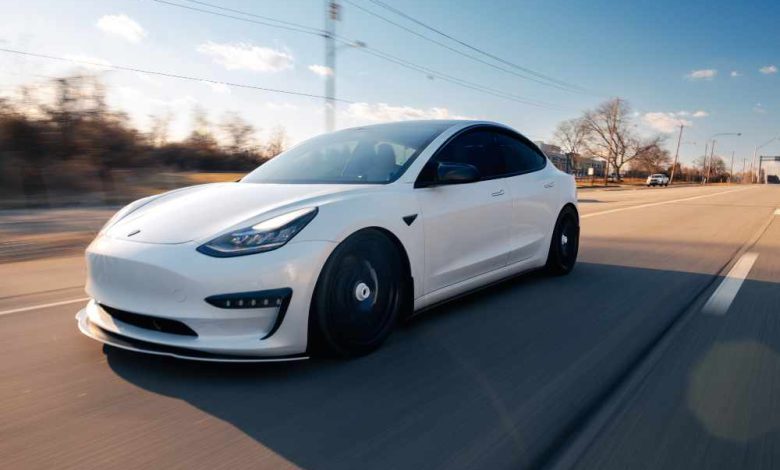Why Is Everyone Talking About the Groundbreaking Tesla Car?
Why Is Everyone Talking About the Groundbreaking Tesla Car?

Tesla, the renowned electric vehicle manufacturer, has been making waves in the automotive industry with its advanced self-driving technology. But how does Tesla achieve this remarkable feat? The secret lies in a combination of cutting-edge hardware and sophisticated software.
Firstly, Tesla cars are equipped with a range of sensors that provide crucial data for autonomous driving. These sensors include cameras, radar systems, and ultrasonic sensors. The cameras capture images of the car’s surroundings, while the radar system uses radio waves to detect objects at a distance. Additionally, ultrasonic sensors help measure proximity to nearby objects. This comprehensive sensor suite allows the Tesla car to have a 360-degree view of its environment Repair Manuals.
The rise of self-driving cars
The rise of self-driving cars has revolutionized the automotive industry, and one company at the forefront of this technological breakthrough is Tesla. But how does a Tesla car achieve self-driving capabilities? The secrets lie in a combination of cutting-edge hardware and sophisticated software.
Firstly, Tesla vehicles are equipped with an array of sensors that enable them to perceive their surroundings accurately. These sensors include cameras, radar systems, and ultrasonic sensors strategically placed around the car. These sensors constantly gather data on nearby vehicles, pedestrians, road conditions, and obstacles. This comprehensive perception system allows the car to make informed decisions in real-time.
Secondly, Tesla’s Autopilot software plays a crucial role in achieving self-driving capabilities. This software processes the vast amount of data collected by the sensors and uses advanced algorithms to interpret it effectively. It can recognize patterns and predict potential hazards on the road ahead.
Tesla’s Autopilot technology: An overview
Tesla’s Autopilot technology has revolutionized the automotive industry with its groundbreaking self-driving capabilities. This cutting-edge system is built upon a complex network of sensors, cameras, and advanced software algorithms that enable Tesla vehicles to navigate roads autonomously. At the heart of this innovation lies Tesla’s Autopilot hardware suite, which includes radar, ultrasonic sensors, and a forward-facing camera.
The radar system plays a crucial role in detecting and identifying objects on the road. It uses radio waves to measure distances between the car and surrounding obstacles, providing invaluable data for autonomous driving decisions. Complementing the radar are multiple ultrasonic sensors strategically placed around the vehicle. These sensors help detect nearby objects at close range and assist in parking maneuvers. However, it is perhaps Tesla’s forward-facing camera that steals the spotlight when it comes to achieving self-driving capabilities.
Hardware components of Tesla cars
Tesla cars have long been at the forefront of the self-driving revolution, but what exactly makes them capable of this seemingly futuristic feat? The answer lies in the intricate hardware components that work seamlessly together to achieve autonomous driving. At the heart of Tesla’s self-driving technology is a sophisticated network of cameras, radars, and ultrasonic sensors. These sensors provide 360-degree coverage around the car, allowing it to perceive its surroundings in real-time.
The cameras act as the eyes of the vehicle, capturing high-resolution images that are analyzed by powerful onboard computers. This enables Tesla’s cars to identify and track objects such as other vehicles, pedestrians, and traffic signs with remarkable accuracy. In addition to visual input, Tesla vehicles rely on a radar system that uses radio waves to detect objects even in low visibility conditions like rain or fog.
Software and algorithms powering self-driving capabilities
Tesla, the renowned electric vehicle manufacturer, has taken the automotive industry by storm with its cutting-edge self-driving capabilities. But what is the secret behind this technological marvel? The answer lies in the sophisticated software and algorithms that power Tesla’s autonomous driving system. These advanced technologies have revolutionized the way cars navigate roads, making them capable of analyzing their surroundings and making real-time decisions to ensure a safe and efficient ride.
At the core of Tesla’s self-driving technology is an intricate neural network that processes vast amounts of data collected from numerous sensors embedded throughout the vehicle. This neural network utilizes machine learning techniques to continuously improve its understanding of various road scenarios and enhance decision-making capabilities.
The role of machine learning in Tesla’s Autopilot
Tesla, the renowned electric vehicle manufacturer, has taken the automotive industry by storm with its cutting-edge self-driving capabilities. But what is the secret behind this technological marvel? The answer lies in the sophisticated software and algorithms that power Tesla’s autonomous driving system. These advanced technologies have revolutionized the way cars navigate roads, making them capable of analyzing their surroundings and making real-time decisions to ensure a safe and efficient ride.
At the core of Tesla’s self-driving technology is an intricate neural network that processes vast amounts of data collected from numerous sensors embedded throughout the vehicle. This neural network utilizes machine learning techniques to continuously improve its understanding of various road scenarios and enhance decision-making capabilities.


